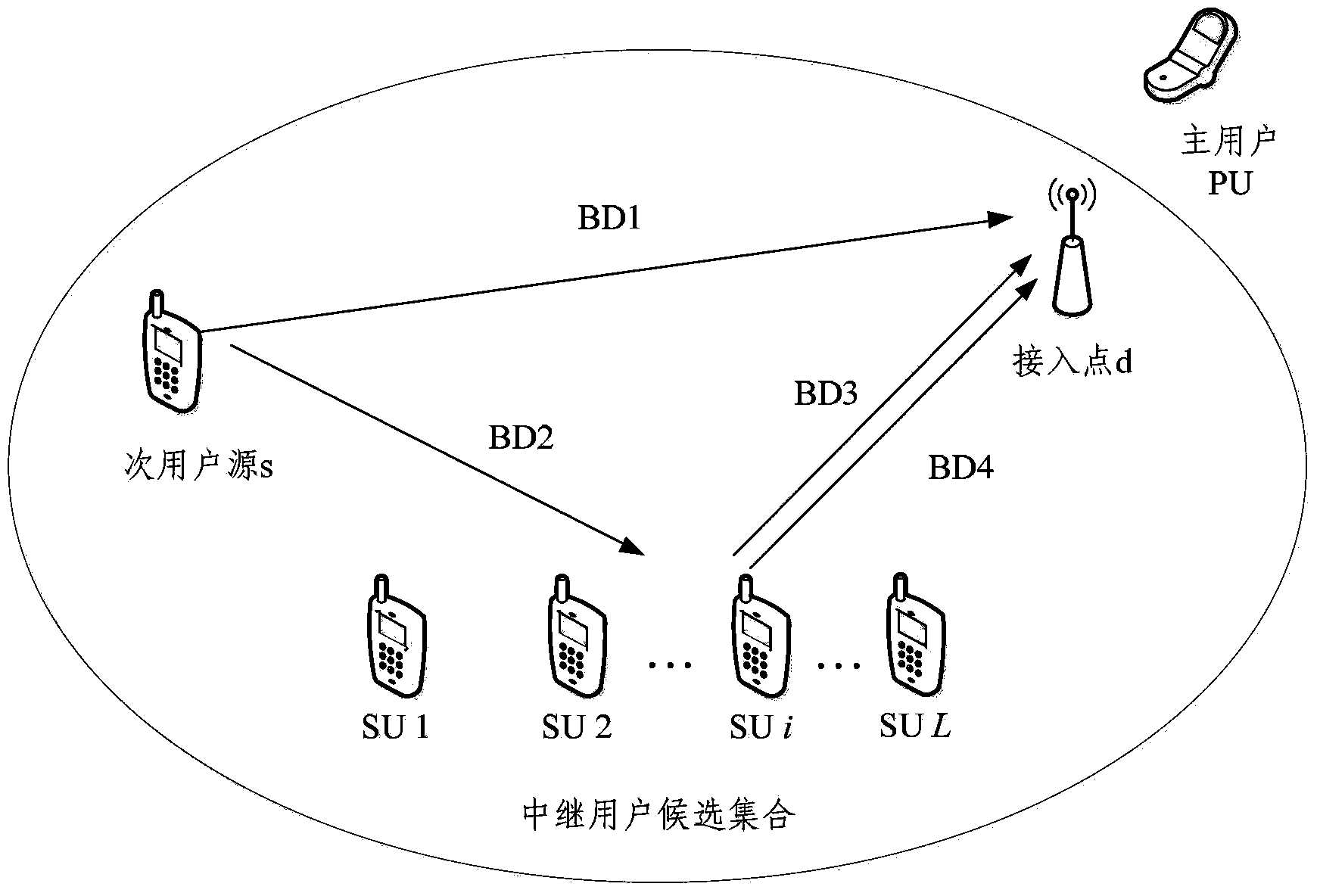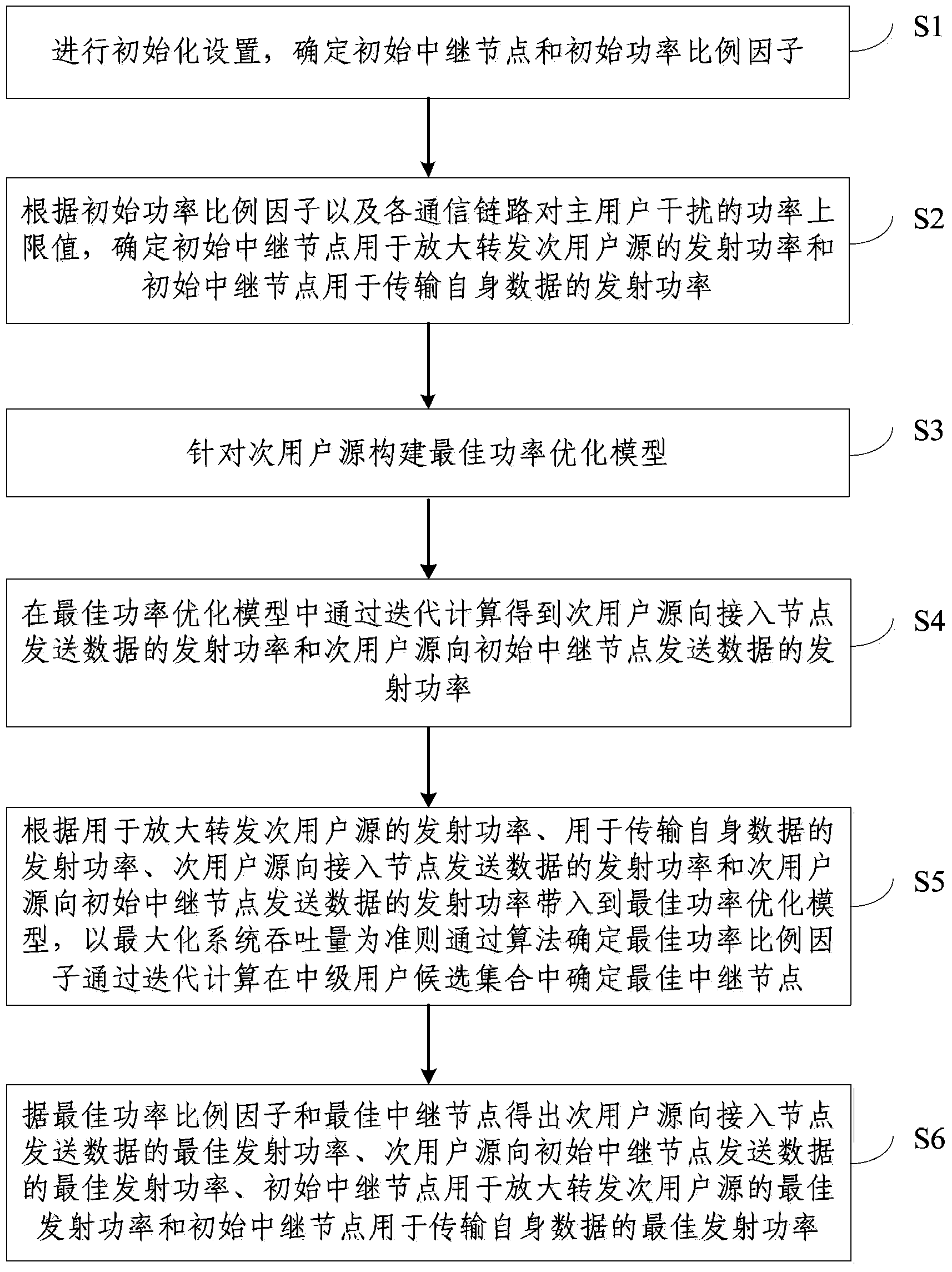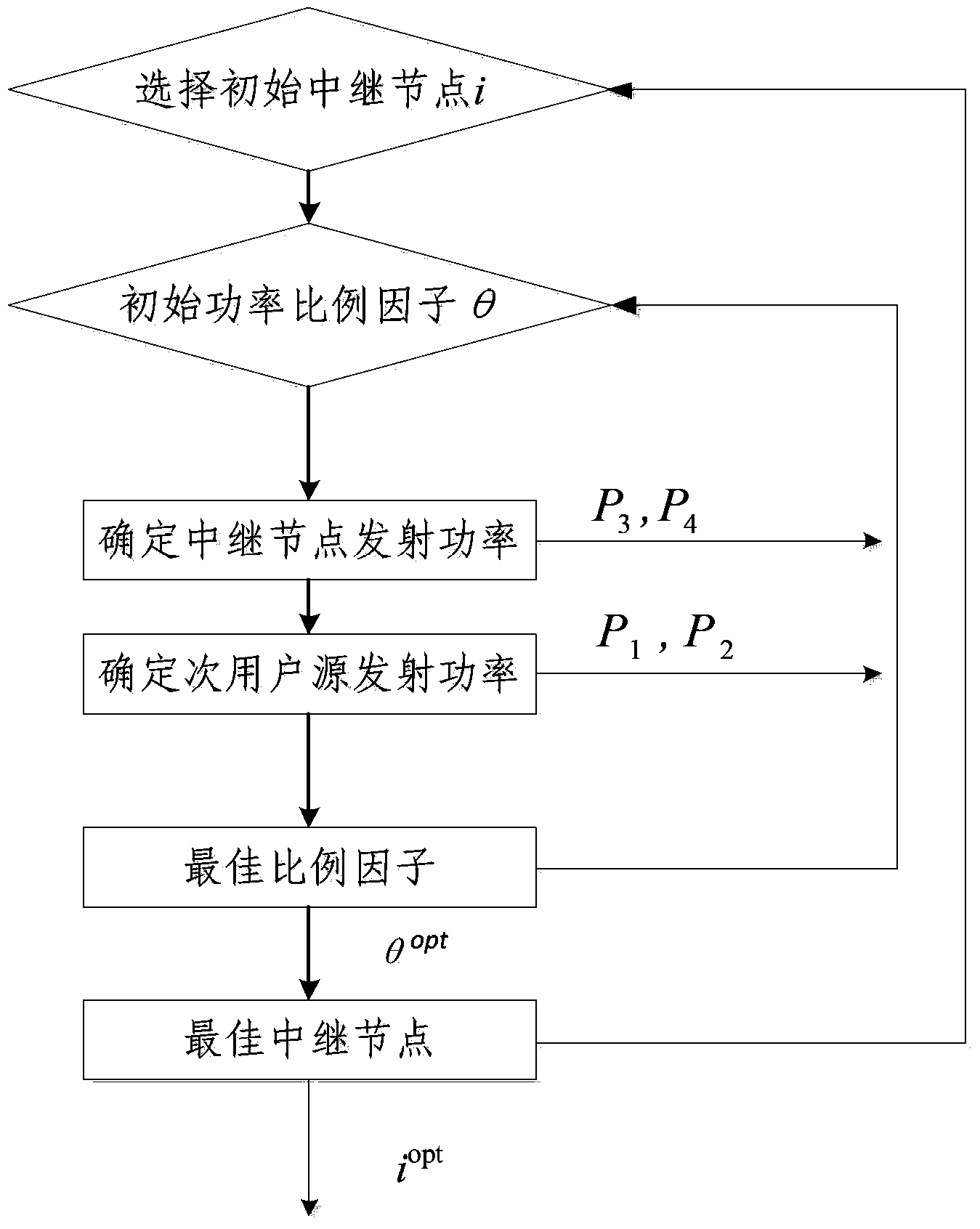United relay selection and power distribution method and system
A technology of power and relay nodes, applied in the field of cognitive radio, can solve problems such as large gap in calculation model, no consideration of relay nodes, and large interference of main users.
- Summary
- Abstract
- Description
- Claims
- Application Information
AI Technical Summary
Problems solved by technology
Method used
Image
Examples
Embodiment 1
[0074] Embodiment 1 of the present invention provides a method for joint relay selection and power allocation, the steps of which are as follows figure 2 shown, including:
[0075] Step S1 , perform initialization settings, and determine an initial relay node and an initial power scaling factor θ, where 0≤θ≤1.
[0076] Step S2, according to the initial power scaling factor θ and the power upper limit value P of each communication link interfering with the primary user 0 , to determine the transmit power P used by the initial relay node to amplify and forward the secondary user source 3 and the transmit power P used by the initial relay node to transmit its own data 4 .
[0077] Step S3, constructing an optimal power optimization model for the secondary user source.
[0078] Step S4, obtain the transmission power P of the secondary user source to send data to the access node through iterative calculation in the optimal power optimization model 1 and the transmit power P o...
Embodiment 2
[0131] Embodiment 2 of the present invention also provides a system for joint relay selection and power allocation corresponding to the method in Embodiment 1. The composition diagram of the system is as follows Figure 4 shown, including:
[0132] Initialization setting unit 41 , determining relay node transmit power unit 42 , model building unit 43 , determining secondary user source transmit power unit 44 , optimal relay node determining unit 45 and optimal transmit power determining unit 46 .
[0133] The initialization setting unit 41 is used for performing initialization settings to determine an initial relay node and an initial power scaling factor θ, where 0≤θ≤1.
[0134] Determine the transmit power unit 42 of the relay node according to the initial power scaling factor θ and the upper limit value P of the power that each communication link interferes with the primary user 0 , to determine the transmit power P used by the initial relay node to amplify and forward the...
PUM
 Login to View More
Login to View More Abstract
Description
Claims
Application Information
 Login to View More
Login to View More - R&D
- Intellectual Property
- Life Sciences
- Materials
- Tech Scout
- Unparalleled Data Quality
- Higher Quality Content
- 60% Fewer Hallucinations
Browse by: Latest US Patents, China's latest patents, Technical Efficacy Thesaurus, Application Domain, Technology Topic, Popular Technical Reports.
© 2025 PatSnap. All rights reserved.Legal|Privacy policy|Modern Slavery Act Transparency Statement|Sitemap|About US| Contact US: help@patsnap.com



